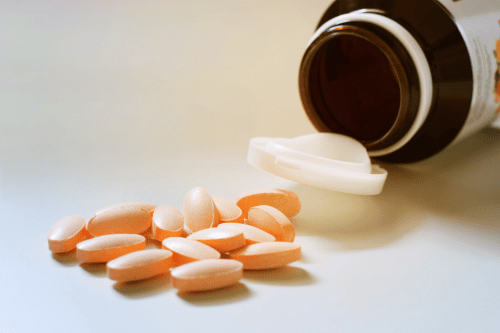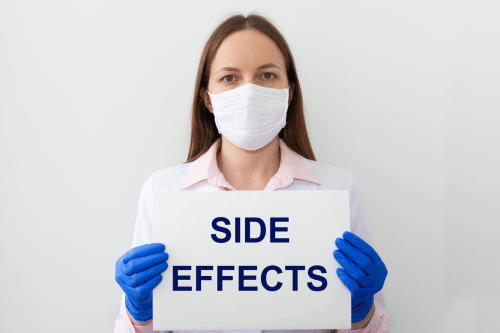

Muscle pain, spasms, and injuries can be debilitating, impacting everyday life and even hindering physical activity. To combat these issues, physicians often prescribe muscle relaxants like Robaxin (methocarbamol), which is known for its ability to reduce muscle spasms and reduce muscle pain. However, when it comes to medications, the potential for addiction is always a concern.
If you’ve been prescribed Robaxin or are considering it as a treatment option, you may wonder: Is Robaxin addictive? This article will explore the properties of Robaxin, its potential for misuse, and what to watch for if you’re concerned about drug dependency.
Robaxin (generic name: methocarbamol) is classified as a skeletal muscle relaxant. Unlike some medications that directly target muscle fibers, Robaxin works by acting on the central nervous system (CNS). This means that it doesn’t actually relax the muscles themselves but rather reduces the nerve signals that cause muscles to contract or spasm. Robaxin is often prescribed for short-term relief of acute musculoskeletal pain associated with conditions such as muscle injuries, spinal cord issues, or muscle stiffness.
The drug is generally used alongside other forms of therapy, such as physical therapy, rest, and sometimes over-the-counter pain relievers. Skeletal muscle relaxants, like Robaxin, are known to be effective for treating muscle spasms caused by injury or inflammation. Despite its effectiveness in managing muscle pain, Robaxin does not possess the same addictive properties as narcotics, making it a safer option for short-term use.
However, this does not mean it is entirely free from misuse potential. Skeletal muscle relaxant ingestion, particularly when combined with other substances that affect the central nervous system, can significantly increase the risk of adverse effects. A 1990 study indicated that while standalone ingestion of skeletal muscle relaxants presents minimal risk, the dangers are heightened when ingested with multiple drugs, underscoring the importance of understanding these interactions to prevent severe outcomes.
Methocarbamol is a muscle relaxant commonly prescribed to alleviate pain and discomfort caused by muscle spasms, strains, and sprains. It operates by slowing down activity in the central nervous system, which helps the body relax and reduces muscle spasms. Often, methocarbamol is used in conjunction with physical therapy to treat muscle injuries and inflammation, enhancing the overall effectiveness of the treatment.
The medication is available in tablet form and can be taken orally or administered intravenously in clinical settings. Patients typically begin to feel the effects of methocarbamol within 30 minutes of ingestion, with peak effects occurring within 1-2 hours. While methocarbamol is not a narcotic, it can cause side effects such as drowsiness, dizziness, and nausea, particularly when taken in high doses or combined with other central nervous system depressants. Although it is not commonly abused, individuals with a history of substance abuse may misuse methocarbamol for its sedative effects.
The question of whether Robaxin is addictive is more nuanced than a simple yes or no. Robaxin is not classified as a controlled substance, meaning it is not seen as having a high potential for addiction or abuse. Unlike narcotics or central nervous system depressants like benzodiazepines, Robaxin doesn’t induce a euphoric “high” that typically leads to substance abuse.
That said, Robaxin can still be misused, particularly when taken in higher doses than prescribed or combined with other substances, such as alcohol or anti-anxiety medications. The risk of substance misuse increases for individuals with a history of substance use disorders or addiction. Methocarbamol abuse is not common, but some people may misuse it for its sedative effects, especially when looking for relief beyond treating muscle spasms. Additionally, mixing Robaxin with alcohol or other drugs can significantly increase the likelihood of serious overdose effects, making it as dangerous as the misuse of other drugs.

To understand why Robaxin is less likely to cause addiction, it’s essential to know how it works. Robaxin acts as a central nervous system depressant, which helps treat muscle spasms by reducing the nerve signals that cause the muscles to contract involuntarily. It doesn’t directly target muscle fibers or relieve pain in the way that opioids do.
The subjective and behavioral effects of Robaxin, particularly its sedative properties, have been studied in the context of its potential for misuse. Research comparing methocarbamol to lorazepam and placebo has highlighted concerns about addiction risks when dosages are increased.
Because of this, Robaxin doesn’t produce the same sense of euphoria or reward that can lead to a compulsive cycle of drug abuse. However, the sedative effects of Robaxin, particularly when taken in higher doses, can lead to misuse. Users may experience extreme drowsiness, blurred vision, and difficulty breathing, particularly when Robaxin is mixed with other CNS depressants.
Although Robaxin is generally safe when taken as prescribed, there have been cases of methocarbamol abuse. Individuals may misuse the drug to enhance the effects of other substances, like alcohol or other drugs, which can lead to dangerous drug interactions. In these cases, Robaxin’s depressant effects on the central nervous system can become more pronounced, increasing the risk of respiratory depression, extreme drowsiness, and even methocarbamol overdose.
Symptoms of methocarbamol overdose may include confusion, severe drowsiness, and even difficulty breathing, requiring immediate medical attention. If taken in high doses, particularly alongside other depressants, Robaxin can dangerously slow breathing, potentially leading to unconsciousness or death.
One of the major reasons people fear the misuse of any drug is the potential for withdrawal symptoms. While Robaxin is not considered to be physically addictive, meaning it doesn’t cause the severe withdrawal symptoms associated with substances like opioids or benzodiazepines, some individuals may experience mild symptoms if they stop taking it abruptly after long-term use.
Withdrawal symptoms from Robaxin can include sweating difficulty, muscle weakness, and generalized pain. Additionally, stopping the medication without consulting a healthcare professional could lead to a resurgence of the underlying muscle pain or spasms the drug was prescribed to treat.
It’s crucial to taper off Robaxin under medical supervision rather than stopping it suddenly, particularly if you’ve been taking it for an extended period.

Robaxin is generally well-tolerated, but it can cause side effects, especially when not used according to the prescribed dosage. Some common side effects include:
Drowsiness
Blurred vision
Nausea
Headaches
Stomach pain
Dizziness
Although rare, some individuals may experience more severe side effects, such as difficulty breathing or a slowing of the heart rate. If you notice these symptoms, it’s essential to seek medical help immediately.
People may misuse Robaxin for various reasons, although its misuse is far less common than other muscle relaxants or pain medications. In many cases, people misuse Robaxin to enhance the effects of other CNS depressants. These individuals might not be seeking the pain relief that Robaxin provides but instead aim to experience a heightened sedative effect. This kind of substance misuse is dangerous because it can increase the risk of respiratory depression and other potentially fatal side effects.
While Robaxin does not cause physical addiction, it’s important to recognize the potential for psychological dependence. For those who have previously struggled with substance abuse, using any sedative or depressant—even a relatively low-risk one like Robaxin—can potentially lead to misuse. Psychological dependence can occur when someone begins to rely on Robaxin for more than just treating muscle pain and starts to use it as a way to cope with stress or anxiety.
While methocarbamol is effective for short-term relief, long-term use can lead to dependence, especially when taken in high doses or over extended periods. The risk of dependence is notably higher in individuals with a history of substance abuse or those who use the medication for non-medical purposes. Physical dependence on methocarbamol can develop, and withdrawal symptoms may occur if the medication is abruptly discontinued.
Withdrawal symptoms can include nausea, headaches, rebound muscle spasms or pain, insomnia, and anxiety. The severity of these symptoms can vary based on the individual’s dosage and duration of use. To avoid withdrawal symptoms, it is crucial to consult a healthcare professional before stopping or reducing methocarbamol use. A gradual tapering of the dosage under medical supervision is often recommended to minimize withdrawal effects.
Methocarbamol overdose can occur if the medication is taken in excessive amounts or combined with other central nervous system depressants. Symptoms of overdose may include drowsiness, dizziness, stomach pain, confusion, seizures, and in severe cases, coma. Respiratory depression and seizures are rare but serious complications of a methocarbamol overdose.
If you suspect that someone has overdosed on methocarbamol, it is critical to seek emergency medical attention immediately. Call 911 or your local emergency number and provide as much information as possible about the overdose, including the amount and type of medication taken. Emergency responders can administer treatments to counteract the overdose effects and provide supportive care to manage symptoms, potentially saving the individual’s life.
For those seeking alternatives to methocarbamol for treating muscle spasms and pain, several options are available:
Physical Therapy: Engaging in physical therapy can help improve muscle strength and flexibility, thereby reducing muscle spasms and pain.
Acupuncture: This traditional Chinese medicine technique involves inserting thin needles into specific points on the body to stimulate healing and relaxation.
Massage Therapy: Regular massage therapy can help relax muscles, improve circulation, and alleviate muscle spasms and pain.
Heat or Cold Therapy: Applying heat or cold packs to the affected area can help relax muscles and reduce pain.
Other Muscle Relaxants: Several other muscle relaxants, such as cyclobenzaprine, metaxalone, and diazepam, can be prescribed by healthcare professionals to treat muscle spasms and pain.
It is essential to consult a healthcare professional before trying any alternative treatments to ensure they are safe and effective for your specific condition. By exploring these alternatives, patients can find the most suitable and effective treatment for their muscle spasms and pain.
If you or someone you know is struggling with Robaxin misuse or is using the medication in a way that wasn’t prescribed, it’s crucial to seek professional help. While Robaxin itself may not be highly addictive, the misuse of the drug—especially in combination with other substances—can lead to severe health risks.
At Sullivan Recovery, we offer a wide range of services to help individuals battling substance abuse and addiction. Our treatment programs, which include intensive outpatient treatment and access to support groups, are designed to address both the physical and psychological aspects of addiction. We also specialize in treating co-occurring mental health conditions, ensuring that all factors contributing to substance misuse are adequately addressed.
If you’ve been prescribed Robaxin, it’s important to use it exactly as directed by your doctor. Here are some tips for using Robaxin safely:
Follow Your Prescription: Take the medication exactly as prescribed. Don’t take higher doses or use it more frequently than directed.
Avoid Combining with Other Depressants: Never mix Robaxin with alcohol or other CNS depressants, as this can increase the risk of dangerous side effects like respiratory depression.
Report Side Effects: If you experience any adverse reactions, including difficulty breathing or extreme drowsiness, contact your healthcare provider immediately.
Don’t Abruptly Stop: If you’ve been taking Robaxin for an extended period, consult your doctor before stopping to avoid potential withdrawal symptoms.
To sum up, while Robaxin is generally not considered addictive, it can still be misused, particularly when combined with other medications or alcohol. If you’re taking Robaxin for muscle spasms or pain, it’s important to use it responsibly to minimize the risk of misuse. Always follow your healthcare provider’s instructions, and if you’re concerned about potential substance misuse, don’t hesitate to seek professional guidance.
At Sullivan Recovery, we are here to support those facing challenges with substance misuse, including issues related to medications like Robaxin. We offer comprehensive treatment plans that focus on long-term recovery and holistic well-being. If you or a loved one is dealing with substance misuse, reach out to us for the help you need to get back on track.

At Sullivan Recovery, as an in-network provider we work with most insurance plans, such as:
And More
If you or a loved one are struggling with mental health challenges or substance abuse, reach out to Sullivan Recovery today. Our team of compassionate professionals is here to support your journey towards lasting well-being. Give us a call at 949-836-7180.
No, Robaxin (methocarbamol) is not classified as a controlled substance. It is a muscle relaxant that works on the central nervous system to reduce muscle spasms and pain. While it has a lower potential for addiction compared to narcotics or other controlled substances, it can still be misused, especially when taken in higher doses or with other depressants like alcohol.
Robaxin is not typically associated with severe withdrawal symptoms like those seen with opioids or benzodiazepines. However, some individuals who use the medication for a prolonged period may experience mild withdrawal symptoms, such as sweating, muscle weakness, or a recurrence of muscle pain. It’s important to consult a healthcare provider before discontinuing the medication.
Robaxin is generally prescribed for short-term use to manage acute musculoskeletal pain or muscle spasms. The duration of use varies depending on the individual’s condition and response to the medication. Long-term use should only be under a doctor’s supervision to minimize the risk of side effects or misuse.
While Robaxin does not cause physical dependence, some individuals may develop a psychological dependence, especially if they misuse the drug for its sedative effects. This risk is higher for individuals with a history of substance abuse or substance use disorders. Psychological dependence occurs when a person feels the need to take the medication to manage stress or anxiety, even if they no longer need it for muscle pain.